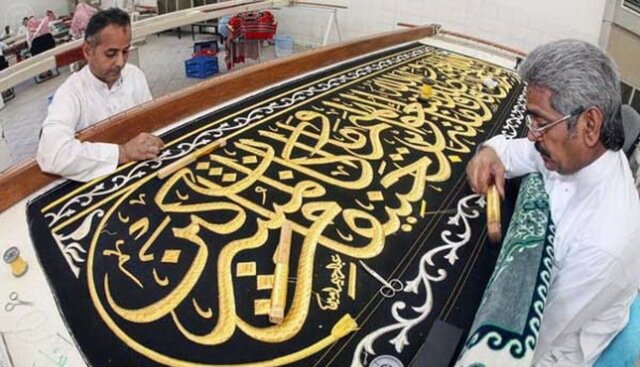Iranian handicrafts: Dah-Yek-Douzi

One of the most good-looking traditional embroidery of Iran, which goes back to the Sassanid era, is “Dah-Yek-Douzi”.
“Dah-Yek” literally means one-tenth of something and is a kind of embroidery where the needle and thread penetrate one point ten times or ten plies of thread are attached to the fabric by a special kind of fastener.
This method of embroidery creates a special sight and creates an embossed vision. Dah-Yek is used to ornate margins of clothing, “Sofreh Ghand” (a piece of linen on which sugar is arranged for ceremonies like weddings), mirror frames, exquisite curtains, bundles, head wears, decorative tableaus, the cover of holy Quran, money bags, pencil holders and many other objects.
Patterns such as “Bazoubandi”, “Band-e Rumi”, “Ghabghabi”, “Shah Abbasi” or “Anari” (pomegranate), “Afshani”, “Goldani”, “Mehrabi”, geometric, figurative and animal motifs are used, according to Visit Iran.
As for the history of Dah-Yek, since its principal material is the Golabatoon thread, its history has intertwined with the history of Golabatoon.
The importance of decorating military and official clothing enhanced the art of Dah-Yek, and along with products in which golden threads were used, Dah-Yek was considered as one of the export goods of the time.
During the Islamic era, after Iranian artists in the city of Susa and Shushtar were commissioned to prepare twelve pieces of the curtain for Kaaba, they began using the art of Dah-Yek to ornate curtains.
In addition, this embroidery decorated covers of holy shrines. Safavid dynasty witnessed the flourishing of Dah-Yek, and it was around that time that artists began signings and sewing their names on their creations.
In addition to highly detailed curtains and bundles, interesting tableaus have remained from the Safavid era that showcases unique skills and abilities of the Safavid artists now kept in museums.
Dah-Yek can be used solely or incorporate sequins, pearls, glass beads, stones, “Naqadeh”, “Sharafeh Douzi”, “Pateh Douzi”, Silk work, Sormeh embroidery, and filigree. This kind of embroidery is very common in cities like Qazvin, Isfahan, Tehran, Yazd, Kashan, and Bandar Abbas.
AFM

Leave a Comment